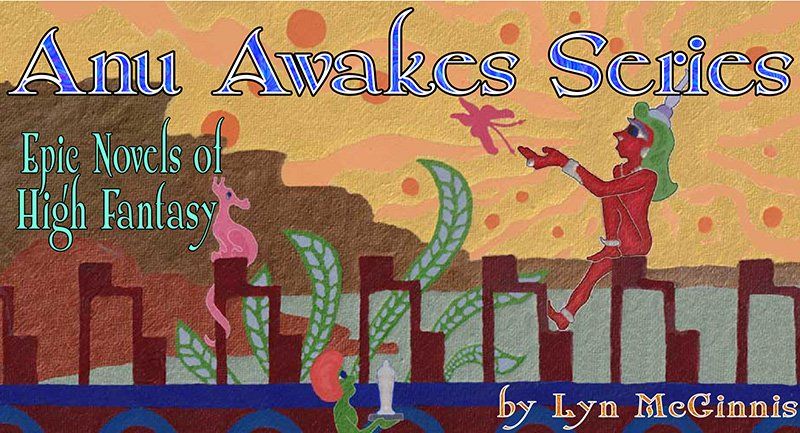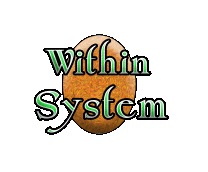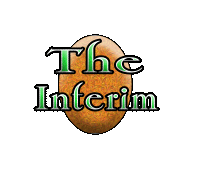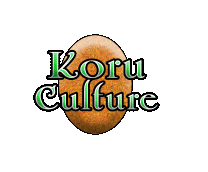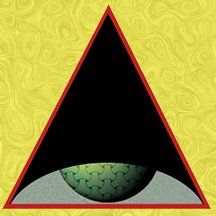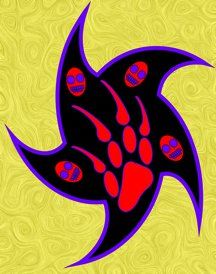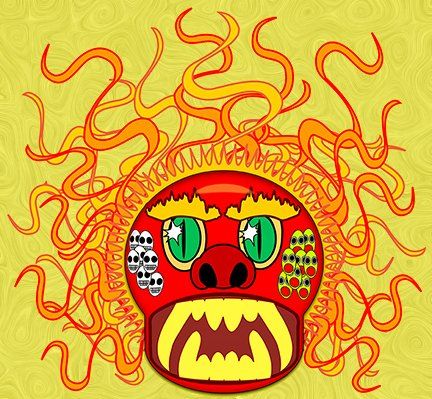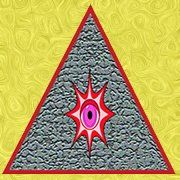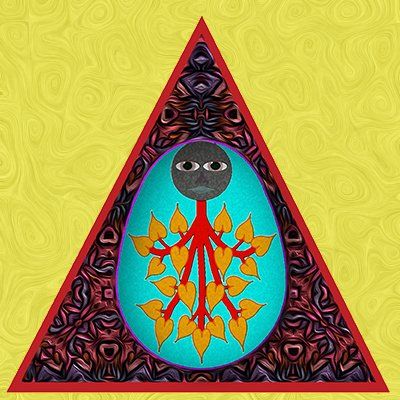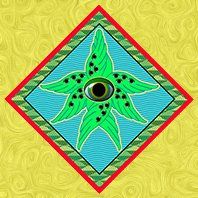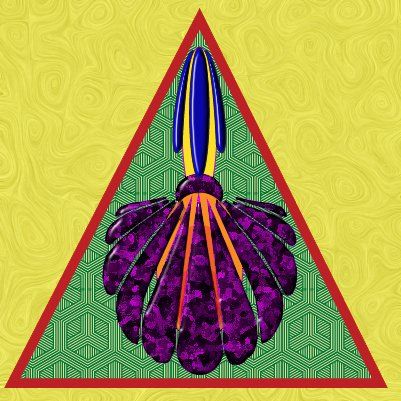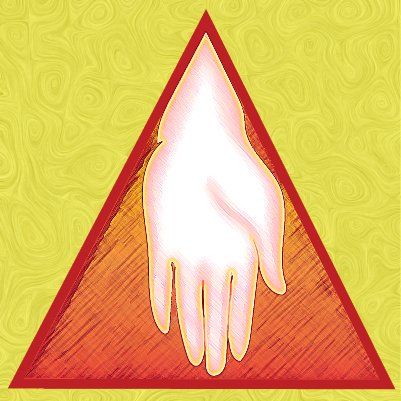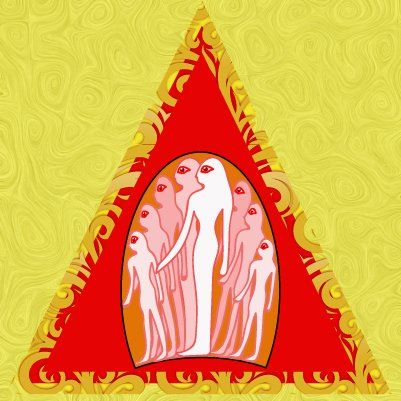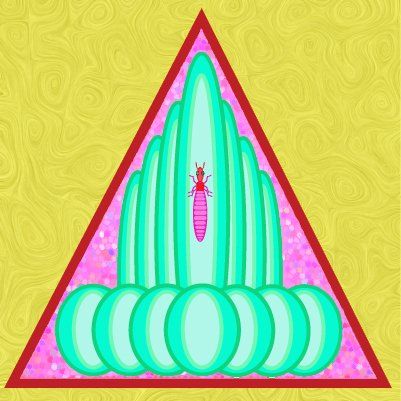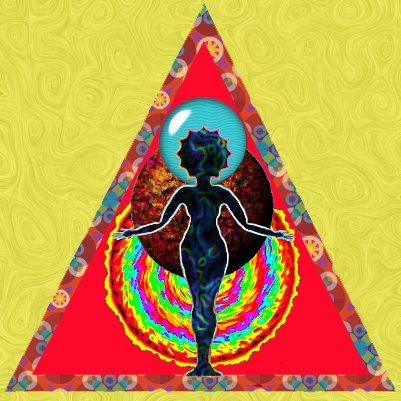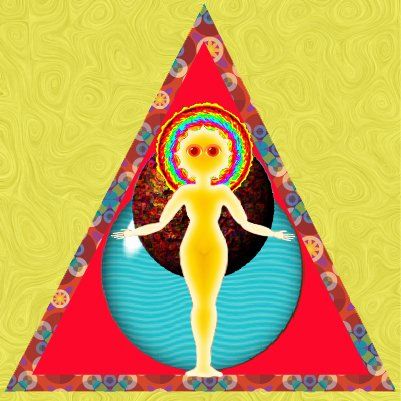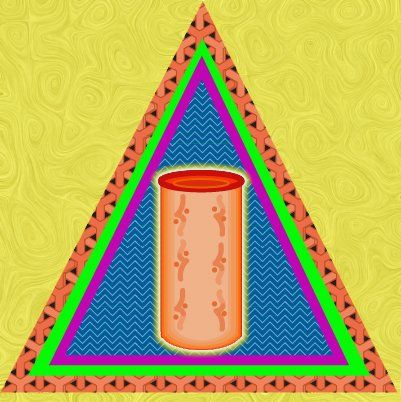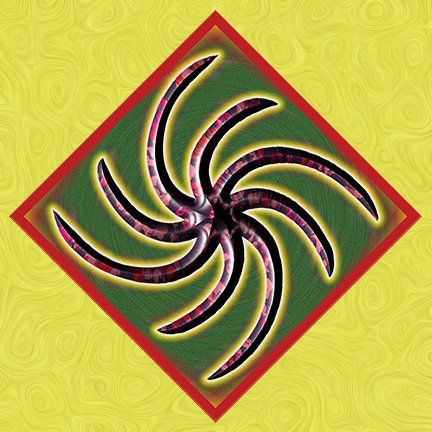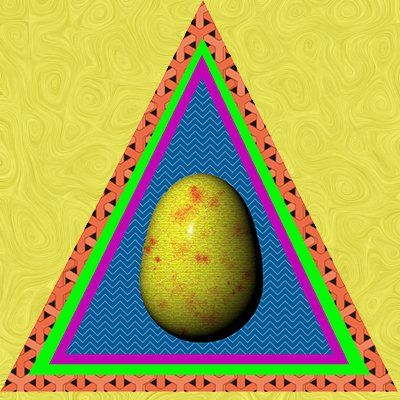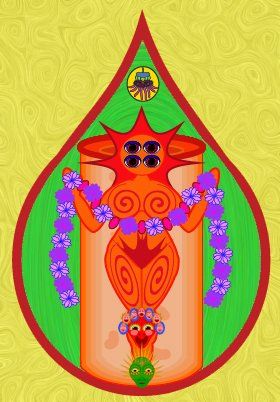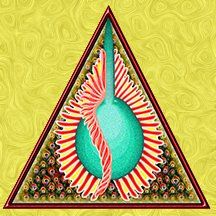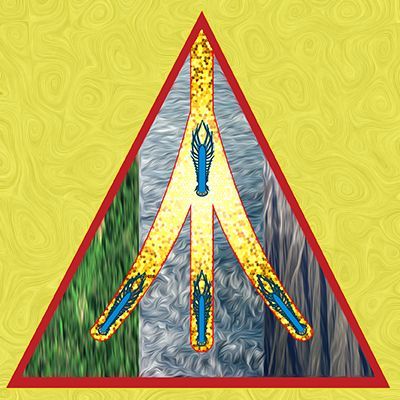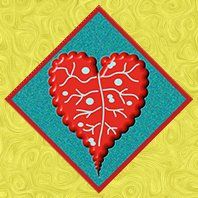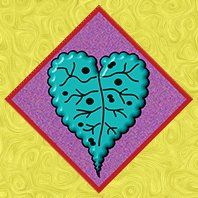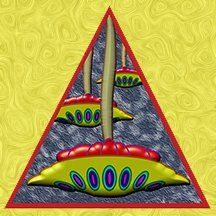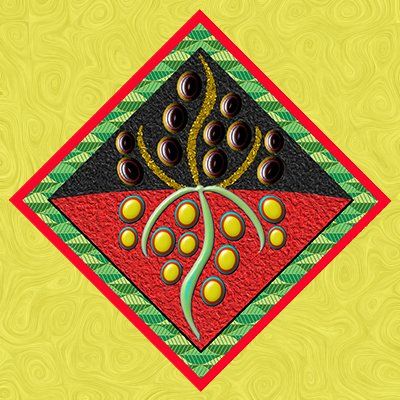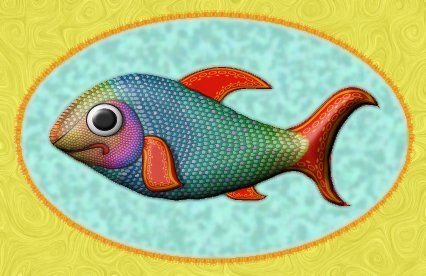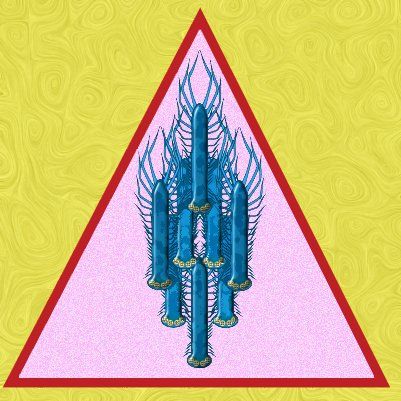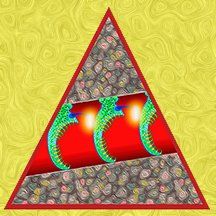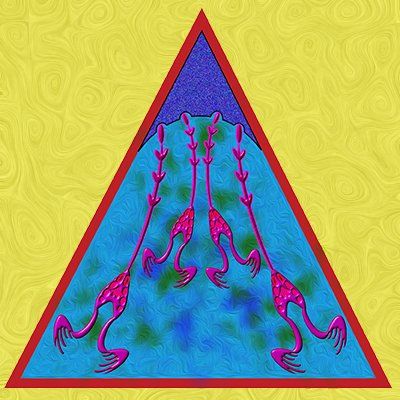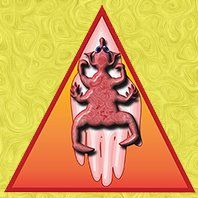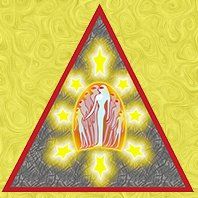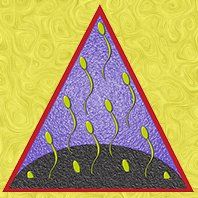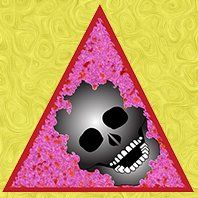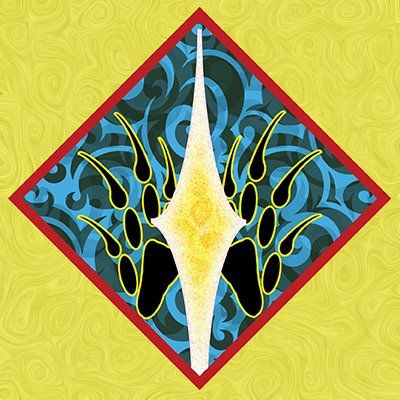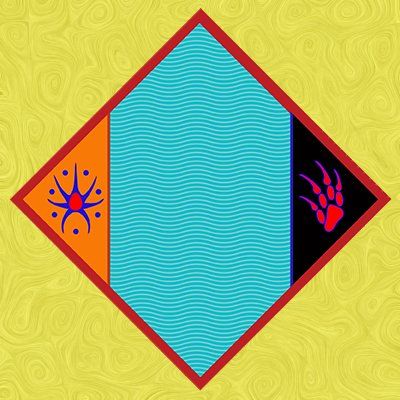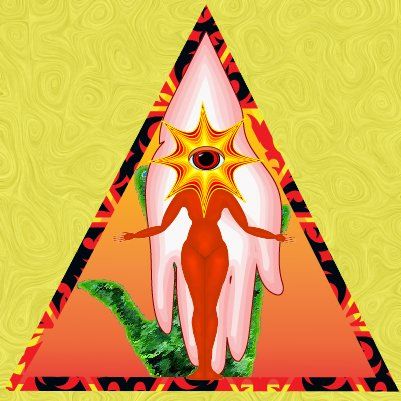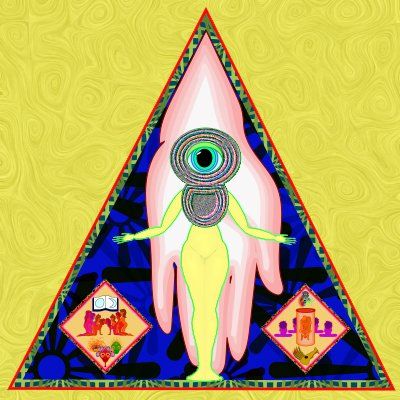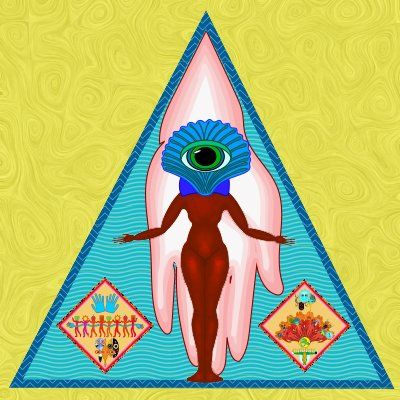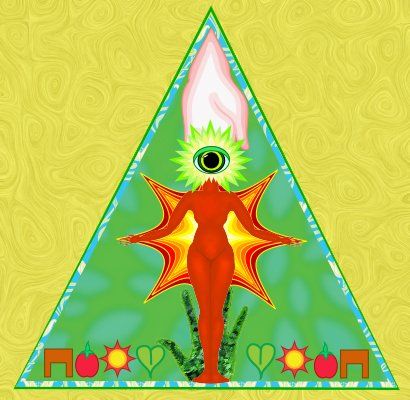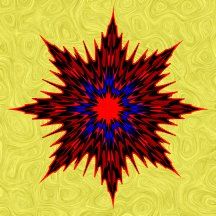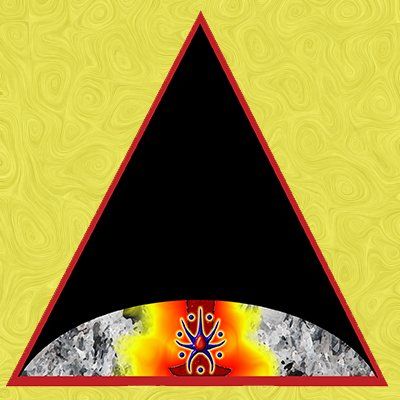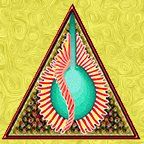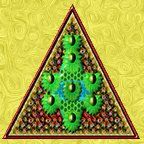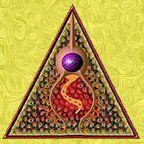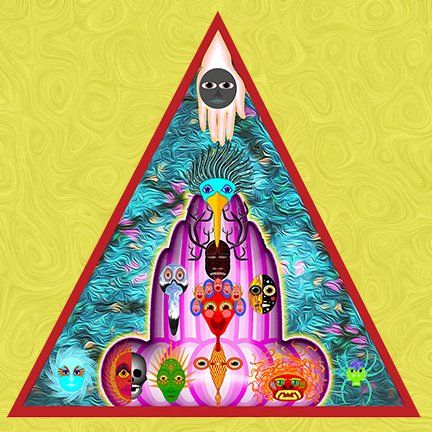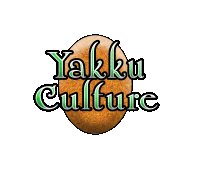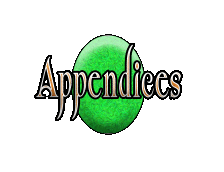
The Koru are the faithful heirs of the Tolku Legacy. After the Killing Swath and Second Suvuka Onslaught, they laboured within Mount Chraxan and other Sanctuaries to nurture all Living Instruments and reawaken the Living System and Resplendent Work of Tatchlan. Through pain and sacrifice, the Koru saved much of value from the Primary Epoch. Through their dedication and genius, the Koru made the Secondary Epoch possible. They have also produced many wonders unknown to the Tolku, including the Healing Vat and the three classes of Koru Yelda, forming steps towards their most significant achievement, the Danam Yelda.
Killing Swath aftermath
Guardians, Suvuka threat, Raw population survived, Suvuka and Hesha Vira, Way cleared for Suvuka revenge, Suvuka delayed in the West, Four Generations, Generational Icons, Sanctuaries and their Chambers, Role of the Varku and the Krall
The Change
Adaptations and mutations, Size and Sensitivities, Koru identity, Pre-Majastas civilization, Operants, Operants source of pride, Koru Longevity, Mount Midin tragedy
Rock Craft
Undisputed Masters, Long Tradition, Koru Innovation, Abstract Rock Craft, The Table, The Archway, The Little Mountain, Figurative Rock Craft, Shell Formations, Knots, Utensils and Instruments, Rock Craft and Water, Rock Craft Clouds, Rock Craft Fire, Fluid Elements complimenting Figurative Compositions
Healing Vats
Conceptual Leap, Phantasm Spume wakens Jelly, Spume becomes the ‘cap’ of Double during their Conclusive Offering, State of Flux and Pomona Nexus, Jelly Eggs to Egg Sacs, Pomona-Uma and the Healing Doubles, The first Trial of Separation in history, First Egg enters its Vat, Pomona-Uma Legacy
Koru Majastas
Brief summary, Majastas antiquity, Zudaz I becomes first Koru Majastas, Many accomplishments, Plans to move north, Continental Lines, Amazement at doubling of Accordant Tones
Koru Living Instruments
Converted: Larpana Plant, Kanart Mushroom, Takshakutan, Converted
Modified: New Mecalan Colonies, Gomuun, Skayo, Vima, Siliam,
Koru humility in classification
Suvuka Final Defeat
Master Duamang’s weapon, Suvuka's final return to Thermistal, Suvuka traditions East of Vettencore, Suvuka surround Lake Teval and the island of Lewetar, Enimik Round, Yakku response to Suvuka retreat
Living Mountain series
Kupat Mountains, Living Mountain Life, Radiant interiors, One million within Home Mountain, Mountain roots connected
Yelda formulation
Koru Mothers Yakku Fathers, Three classes of Yelda, Sumudin, Kudurapala, Field Yelda, Open Air Civilization, Field Yelda last to mature, Impact of the First Burning Blossom on Field Yelda, Tich-Tushmul, Longest Generational Plan
Dynasties
First seven dynasties, Mustamu and the succeeding seven dynasties, Dynastic Icons
Deep Domains
Guardians
After the Killing Swath, the Tolku survivors called themselves the Guardians. They made their painful way through the death and ruin of their glittering Cluster-of-Clusters Civilization on Statos-Vey and Rho-Jashun to the mountain Sanctuaries. On their way, they tried to gather what they could to ensure all was not lost and forgotten. Their chief aim was to ensure Tatchlan would be rebuilt and eventually a new line of Majastas grown. The recovery of the ‘Final Tolku Proclamation’ revealed this was all part of what was known as the ‘Rectification.’ This Rectification was the final action of the last Tolku Majastas and was intended to correct many cascading maladies within the Living System.
Recovered fragments suggest this Rectification was a last resort. It followed the failure of a vast Generational Plan, carried out by several Tolku Majastas Dynasties. When this Plan failed to correct these catastrophic and multiplying errors, it was determined that only a complete collapse and rebuilding could restore it. It must be noted here that the the Yakku rejected this interpretation of events. Most viewed The Killing Swath’s destruction of what became known as the Primary Epoch, and its global civilization as a catastrophe. The Koru’s later assertion that it was deliberately enacted as a grim necessity to save the Tatchlan System was condemned by many Yakku as an ‘abhorrent doctrine.’
Suvuka Threat
The Guardians also appeared to have been warned that another terror approached from afar. The Suvuka were large, four-legged animals native to Thermistal. Before the Greater Era of the Primary Epoch, they launched an invasion of the southern lands with the clear intent of destroying the Tolku known as the First Suvuka Onslaught.
After their defeat by the Tatchlan Master's craft, most were domesticated and countless generations had been workers, servants and beloved companions of the Tolku throughout the Primary Epoch. A majority of the domestic stock was bred throughout the three lands. Some also came from a relatively small raw population behind the Vettencore Passage, an immense natural and constructed seaway separating the eastern third of the continent.
Raw population survived
There are many theories as to why this raw population was allowed to survive after the war, let alone continue in their designated territory throughout Tolku Cluster-of-Clusters history. Some Honoured Historians now speculate this was a deliberate policy foreseeing the remote possibility of an eventual Killing Swath. This would suggest a dark seed of destruction dwelt within the glorious life of the Primary Epoch (See Suvuka and Hesha Vira immediately below). It is also speculated that the domesticated Suvuka were altered sufficiently, so they, too, fell with the Killing Swath, where their raw relations were not. Despite this immense timespan, the Suvuka nursed a bitter hatred for the Tolku. They brooded over their dreams of vengeance. They built defiance of the Tolku into all their rituals throughout the generations. It is known the Tolku studied this well, but there is very little surviving documentation detailing their findings.
Suvuka and Hesha Vira
There is crucial evidence that the Tolku cultivated the raw Suvuka for a desperate purpose. It comes from clear indicators that throughout the Primary Epoch, the Suvuka were aware of and worshiped the Tatchlan Face of Raw Life, Hesha Vira. This state of affairs predates the Greater Era of the Primary Epoch. At the end of the Lesser Era, in the late Duamang Age, the initial Quickening of the Faces and Resplendent Work occurred. Hesha Vira appears to have gone wrong after the initial Formation of Faces and rebelled against her place among the other Primary Faces. Within the Living System, she found both dissenting Tolku movements and the entire body of the Suvuka. She appears to have tried to enlist their aid in overthrowing the Living Orb and returning all to Her original realm, Indatubangus, the unrefined state of Raw Life. Eventually, She was integrated with the other Principal Faces. Her connection with the Suvuka was encouraged by the most-ancient Tatchlan Masters and the line of Tolku Majastas Dynasties throughout the Primary Epoch. This drama plays out in the first novel of this series: Hesha Vira’s Challenge.
After the Killing Swath, while the other Faces silently sunk to the surface of the shrinking Living Orb, she remained vital due to the adorations of her loyal Suvuka, still secured behind the Vettencore Passage. While much of the Living System went dormant, she was a lifeline, allowing the emerging Koru Operants and Invocates to rebuild the Resplendent Work. This occured after the First, Second, eventually, and Third Generations of Guardians had reached the Sanctuaries. No clear directive survives, suggesting this was a Generational Plan, but much secondary evidence now appears to support it. There have been intermittent waves of Majastas Inhibitions concerning a cultivated link between the Suvuka and Hesha Vira, usually during disturbed times. When the Inhibition has been lifted, a growing consensus, based on the ongoing work of Venerable Scholars, points to deep work within Tatchlan to form this link. This has partly been fuelled by the Annotations of certain Majastas suggesting they have seen evidence ‘within the deepest of folds’ of the General Plain of this profound project. Regardless of whether this devotion existed, what is certain is that the Suvuka did not spare Tolku icons of Hesha Vira. This suggests they either did not recognize them or were outraged at the Tolku depiction of what they may have viewed as their Goddess.
The first novel of this series, Hesha Vira's Challenge, details this rebellion at the dawn of the Greater Era of the Primary Epoch.
Way cleared for Suvuka revenge
Whether by design or chance, what is known is The Killing Swath did not affect these raw Suvuka, and now their prison was left unguarded. According to eyewitness accounts, the Vettencore breach occurred in Year Seven of The Interim. As on Statos-Vey and Rho-Jashun, the Killing Swath destroyed most of Tolku, and their domesticated Suvuka, on the rest of Thermistal. This left the continent abandoned and open to the hordes, spreading their vengeance across the land. From the start, their aim was unambiguous - to erase all traces of the Tolku from Anu’s Face. Along with killing all they could find, they pulled down all constructions and pulverized all art and craft they encountered. Despite this campaign of systematic destruction, their passage west across Thermistal still appears to have only taken one to two decades.
Suvuka were delayed in the west
The Suvuka were critically delayed upon reaching the vast forests of western Thermistal. After encountering so few survivors across the continent, they were surprised to find that many Tolku had taken refuge high up in the immense trees of this region. It is estimated that one in one hundred of the original Tolku population had survived and begun a desperate migration west ahead of the Suvuka crossing the Vettencore Passage. By happy chance, they met members of one of the few national institutions to survive and continue in sufficient numbers there, known as the Viracocha District Flora Ministry. Suffice it to say their specialized knowledge and tools allowed these refugees to make the unlikely ascent up into the forest canopy.
Honoured Historians and Venerable Scholars have pieced together fragmentary evidence suggesting one or more Tolku Majastas formulated either a series of Targeted Generational Plans or oversaw one Epochal Generational Plan for the aftertmath of The Killing Swath. In part, this included evacuating the survivors of Thermistal to Rho-Jashun. It appears the plan was for them to join the other Guardians on Rho-Jashun. The majority only reached the forests in time, and few ever crossed the Panchala Sea to reach the Sanctuaries. Instead, they stayed high in the trees beyond the Suvuka’s reach. The Suvuka’s vain attempts to eradicate the Tolku survivors on Thermistal achieved two positive ends. One was unexpected setbacks as the survivors successfully killed many of their Suvuka attackers on Thermistal. The second benefit was that this stalemate gave the Tolku Guardians of Rho-Jashun more time to recover what they could and reach the Sanctuaries.
Four Generations
On Rho-Jashun, the Guardians came to designate themselves as originating in the ‘First,’ ‘Second,’ or ‘Third Generation’ arrivals at the Sanctuaries. The First Generation had been close enough to enter after The Killing Swath within the first few decades of The Interim. Among these were those sailing to the coast, either from Thermistal, or other parts of Rho-Jashun or Statos-Vey. Tradition relates how, of the three groups, the First Generation were the best provided and brought the most to the Sanctuaries. In popular culture, they have the emblem of ships. Most of the Second and Third Generation made their way through the destruction and decay of land from further south or north. The Second Generation’s emblem was a cart, and the third was a pair of unshod feet, indicating how the once rich land had degenerated into a rude wilderness. These three generations picked up followers and formed a succession of waves converging on the Sanctuaries during the first eighty years of The Interim. The ‘Fourth Generation’ did not immediately come after the Third. If there was a fourth wave of migrants, they had too far to travel before the Suvuka’s Second Onslaught stopped their progress. The Fourth Generation referred to the progeny of the previous generations and were born within the Sanctuaries. They distinguished themselves as those who ventured out to rescue vital Tatchlan elements and other Primary Epoch Attainments after the Second Suvuka Onslaught had begun.
Generational icons
These four simple and stark icons appear in many ways throughout the Koru Cluster-of-Clusters Nation. Over time, these symbols of the Four Founding Generations of Guardians, have taken on many additional references and may be incorporated into numerous insignia of ministries and enclaves. While the Primary Mountain border bounds these, the first three are thought to be perhaps the final generation of symbols of the last Tolku of Anu.
The First Generation Crest shows a small eye of awareness set upon a blackened backdrop scored by cracks, signifying the first collection of survivors of the Killing Swath. They were cluster fragments integrating into new clusters and gathering up the resources at hand to conduct themselves swiftly to the Sanctuaries. The Second Generation Crest symbolizes those who survived The Killing Swath but needed years to gather and make the arduous journey to the Sanctuaries from all over Anu. The Eye of this emblem is more distressed and appears against a backdrop of desolation. The Third Generation Crest represents those survivors born after The Killing Swath, usually in remote corners of Anu, who followed the trails laid down by the previous two waves of migration to the Sanctuaries. The last wave of this migration first began to enter the Sanctuaries sixty years after they opened.
The Fourth Generation Crest represents a very different group, composed of several successive generations. They were born within the Sanctuaries but issued out, despite Rho-Jashun and later Statos-Vey being occupied by the Suvuka, to recover every scrap of Primary Epoch Attainment. The details make clear the danger of these missions, with two Suvuka claws and blood dripping from the eye. Their service and sacrifice to ensure the solid founding of the future Cluster-of-Clusters Nation runs to the core of the Koru.
The three Sanctuaries and their chambers
These generations of
Guardians began occupying the Prime Sanctuary within the
Mulungu Mountains of
Rho-Jashun -Mount Chraxan. Existing
clusters
formed by the First Generation welcomed the Second and Third Generation. Since their arrival, the First Generation had laid the foundations for permanent settlement. Mount Chraxan naturally contained extensive natural passages and large interiors.
Upon arrival, the First Generation discovered additional sealed entranceways within these formations. Some among them possessed the needed craft to open them and found an extensive network of carved corridors, chambers, and other spaces designed for storage and gathering, including a measure of dry supplies, tools, and other items in heavy chests. No sign of these chambers ever being inhabited suggests their design as a refuge.
The other two Sanctuaries were deep in the hearts of the Mountains Arnom and Rongu. Mount Arnom is in District Five, the Ronxad Interlaced Dependency. Mount Chraxan and Rongu are within sight of each other in District Six, the Bangkur Interlaced Dependency. Both districts are part of the modern Koru Cluster-of-Cluster Nation of Rho-Jashun. Historic allusions are made to markers leading refugees to all three and clarifying where the other two mountain havens were. Mounts Arnom and Rongu had versions of these Sanctuary chamber complexes and supplies.
The above icon is for all Sanctuaries bequeathed by the final Tolku of the Primary Epoch to what would become the Koru of the Secondary Epoch. Fashioned later in The Interim, it already shows Koru characteristics, including the ‘mountain’ border, the egg shape of shelter within living rock, and a lush growth growing down from the roof. Alatanda, the Bridge of all the Tatchlan Faces, is the nourishing root of this new culture.
Role of the Varku and Krall
A great deal may be said about the preeminent member of the Cousin family, the Varku. Deep conditioning during the Primary Epoch included profound commands laid at their core to be awakened in emergencies.
While many fell during the Killing Swath, those surviving appear to have had these deep chambers opened in their minds. Once roused, they began their labours to assist the survivors. These included seeking them out and helping in initial foraging and other tasks to see to their survival. They also marshalled all other branches of the Cousin family to assist the emerging Guardians.
With the location of the Sanctuaries, they appear to have had other chambers opened inside them. The Varku became vital partners in developing these underground refuges and picking up many skills to further the development of the Guardian culture.
The Varku led those unable to remain inside the caves to hidden valleys deep within the Mulungu Mountains. The giant Cousins, the Toboku and Tamku, who ultimately would have been exterminated by the vast hordes of Suvuka that would cover the continent, survived The Interim there.
They further distinguished themselves by accompanying the Fourth Generation into the dangerous Suvuka-held territory to retrieve Living Instruments of all kinds along with vital Primary Epoch attainments. The other Crossover Servants, the Krall, joined them. Being so profoundly worked by Tatchlan, these two distinct beings perceived the presence of a wide variety of Living Instruments in obscure locations and, therefore, contributed significantly to the recovery of this material. Despite Krall's surveillance, the Suvuka discovered this secret reconnaissance on rare occasions. The Krall and Varku were invaluable in assisting the Guardians in their escape and protecting their Living Instruments. Their service included throwing themselves at the enemy and marshalling additional Servants to join them in what were often suicidal operations.
So valued were the Varku that the emerging Koru Cluster-of-Cluster Nation would augment them further. They served within their mountains and later their Living Mountains, but they also tailored them further for the exclusive use of the Yelda for their eventual Cluster-of-Clusters Nation. While some of the famed roles these supereminent Cousins played in the Primary Epoch were known, they displayed as much or more during the Secondary Epoch. The Krall was also improved. They served as eyes for the Koru and became vital servants of the seafaring Koru Yelda, the Kudurapala.
Adaptations and Mutations
As the Sanctuaries filled, existing tunnels were utilized, and new ones were dug to connect them. Work began on preserving the Living Instruments and preparations made for the eventual Suvuka Onslaught. During these activities, a perception grew among the population of changes to their bodies. Those First Generation descendants, mostly Mundanes who entered the mountains within the early decades after The Killing Swath, noted subtle adaptations and mutations in their offspring.
The next generation saw additional changes in their young. The Second and Third Generation arrivals differed in other ways from the First Generation clusters, but the same changes began to appear as their infants and subsequent cohorts were born. These changes set on rapidly and were added to by each new generation. These consistent alterations became pronounced when the Suvuka spread across the Marachla Plain again before moving south to Statos-Vey.
The icon for The Change represents the transition from Tolku to Koru. The Tolku presence is at the top in the form of a dwindling blue extistence, emptying the last of itself into a beautiful and orderly abundance of new life. The structure of the lower life is similar but more profuse, elaborate and vital. This organic metamorphosis takes place against the backdrop of the ordered and revitalized life of the Wakened System.
Size and Sensitivities
These adaptations took the form of a general increase in girth and compression of body structure. There also was a notable increased intolerance of light and gradual enlargement of their eyes, leading to a gradual move from a diurnal to nocturnal existence.
Other changes included increasing dizziness in open spaces, particularly during the day. In time, they would name the open day sky the ‘Upper Abyss.’ The progress of Nu became a trial for them to be avoided at all costs. They grew many terms of aversion to Nu’s Eye and referred to his dawn as ‘The White Knives.’ These changes allowed for complete adaptation to an underground existence. For those venturing out for supplies, night allowed them a far better chance of avoiding Suvuka, who were near blind during the period of no moons. The Koru became adept at knowing all four moons’ courses and phases and timing their movements when their light was diminished or absent.
While these changes were initially met with confusion and alarm, they became accepted and celebrated as time passed. They eventually had to modify their underground chambers as the dimensions were becoming too low and narrow for their enlarged bodies. To diminishing degrees, the First, Second and Third Generation entering the Sanctuaries were still Tolku. The Fourth Generation, issuing out of those Sanctuaries to gather the last of the Primary Epoch Troves and Tatchlan Elements, comprised these modified succeeding generations. At some point, it was deemed necessary to rename themselves, and the term ‘Koru’ came into being. Reference to this term has yet to be found within surviving Primary Epoch literature, and there is no surviving record of how this name was chosen in the first century of The Interim. These Koru took the White Hand, pointing down to Anu as their icon.
Koru identity
It is impossible to overstate how fundamental these Four Generations' experiences were in the forming the Koru identity. A host of mental changes accompanied this growth in size and an increased set of sensitivities. In one sense, the Suvuka aided in this metamorphosis by becoming aware of populations in the Mulungu Mountains.
Despite their changes, the Suvuka still viewed them as their ancient enemy and spent much effort attempting to discover their hiding places. In anticipation of this, defences had already been prepared before the First Generation arrived. The Koru added ingenious devices, such as horns mimicking Suvuka cries, to confuse them. They also fashioned false passageways, leading them away from population centres and a high-pitched whistle communication system the Suvuka could not hear.
One story fragment tells how the Koru tricked the Suvuka into attacking and burrowing into a sheer rock face. The Suvuka created a deep passageway. The Koru achieved this by throwing their voices to appear to come from the other side.
In their early work to restore the Tatchlan System, the Koru Masters found ways within the Resplendent Work to harry and thwart the Suvuka. These necessities fortified the Koru’s growing preference for enclosed spaces and intensified specialization of knowledge and skills.
Despite their increase in stature and strength, they chose not to have confrontations with the Suvuka but to confuse and evade them. Chaos became associated with the ‘outer Anu,’ whereas peace and civilization were linked to the ‘inner Anu’ within the mountains and, later, the Living Mountains. The Koru’s growing aversion for Nu also played a role in their nocturnal, underground societies, illustrated by one of the earliest icons of this period. It shows a classic Circle of Eight with six men and two women thriving within enclosed space and displaying characteristic Koru pale to white skin and enlarged eyes.
Pre-Majastas civilization
The population of Koru clusters blossomed within the grottos of Mount Chraxan and the other Sanctuaries. Notwithstanding the hostile force roaming within the Mulungu Mountains, the Koru extended their tunnels connecting all subterranean communities, crafting hidden surface pathways they traversed at night to move with relative freedom. They created hybrid crops that could dwell in darkness or open areas at high mountain altitudes. They also recovered many food animals and modified them for an interior existence.
They established many state institutions, including the traditional governmental ministries, and ordered themselves into a ‘Central Triumvirate’ of Mount Arnom, Mount Rongu and the ‘Prime Sanctuary’ of Mount Chraxan. The Koru innovated in many areas beyond what the Tolku achieved. They also deepened their knowledge and appreciation of all aspects of Primary Epoch lore through the remnants brought to the Sanctuaries long ago by the First, Second and Third Generations. They recovered the Mount Midin Amassment and began to explore the mysterious Treasuries.
The Koru chose as their symbol of perfection the tower-building insect colonies known as Ketukku, 'The Rooted Ones,' for their steadfastness, industry and unwavering dedication to their perfect state.
Operants
As in the days of the most-ancient Tolku Uluvatu Masters, the Koru ’s priority was the reconstruction of the Cluster-of-Clusters structure with all Spokes of the Cluster Wheel. This was mainly due to the dedication of the First, Second, and Third Generations. Subsequent generations were forced to issue out of their mountain fastness, risking their lives to retrieve vital cluster elements and Primary Epoch Attainments.
Many tales of tragedy and heroism come down to us from these desperate exploits of the early Koru, leading them to the honour of bearing the title ‘Fourth Generation Guardians.’ While many things of value were lost, all that was essential to building a Cluster-of-Clusters Nation was reclaimed sufficiently to rekindle the Living System of Tatchlan. Among the most unlikely survivors of the chaos were the traditional tall urns containing Sheshenara Nectar, along with Nara Plants and seeds and Shesha to produce more of this vital nectar.
Sheshenara Nectar was fundamental to planting many aspects of the Resplendent Work into new clusters through feeding it to pre-adults, mainly young and pregnant women. They also brought many batches of Cohort Jelly, essential for maintaining Spoke ratios within clusters. Within these vital concentrations of Encirclements of clusters, in only a few generations they proceeded to impressive depths with the growth of generations of Invocates, Masters and an unprecedented number of Operants.
Operants source of pride
Operants are the most profound manifestation of Invocate, able to enter the Wakening System without employing a Living Instrument. These Operants were but one step away from Majastas and were able to sufficiently rouse and revitalize all the Primary and most of the Secondary Faces. What little records exist from the commencement of the Primary Epoch, the Tolku ’s population of Operants numbered between ten and twenty compared to over six hundred the Koru now produced.
Hesha Vira, the first wakened after the Killing Swath by virtue of her link to the Suvuka, lead these Operants to the first of the Breathing Seals Conglomerations left by their Primary Epoch counterparts. These were meant to guide them in learning how to prevent such cascading errors from being repeated. This revelation deeply impacted the early Koru population and their esteem for these Operants. While the final full text of these living sigils was beyond most general readers, it was reveared as a Primary Epoch Trove.
A succession of these Operants also worked to restore the balance between the three layers of the Resplendent System. They had deformed after The Killing Swath. This is a profound source of pride for the Koru. Neither the Tolku before them nor the Danam Yelda after them produced such a prodigious crop of Operants. They revived the Living System and worked many other wonders before the arrival of their first Majastas.
Operants could also locate many creatures fashioned during The Primary Epoch by the Tolku. These benighted creatures were considered precious System Treasures, and the ‘Fourth Generation’ expeditions were launched at considerable risk to locate and bring them back to the Sanctuaries for healing. They became known as ‘The Recovered Ones.’ As with the Koru themselves, most of these beings displayed significant changes after The Killing Swath. Much effort was expended to control the nature of their mutations. The majority of these beings are now refashioned to serve the Koru through their series of living interiors.
Later in this Interim period, Operants further increased their renown by examining and refining of a new creature—the Yelda. These were the issue of The Happy Century, the reuniting of the two halves of the former Tolku, the Koru of Rho-Jashun and the Yakku of Thermistal. Under the direction of the Central Triumvirate’s ‘Yeldic Colloquium,’ this and subsequent generations of Operants were instrumental in the formation of the three classes of Yelda on Rho-Jashun.
Koru Longevity
While incomplete, statistical evidence from the Greater Era of the Primary Epoch showed that among many other benefits, the Tolku extended their lifespan, among many other benefits. The statistical average was between two generations to one and one-half generations per century. The first four generations of Guardians did not live as long. The Interim saw a steady increase in life expectancy due to the cumulative effects of many benefits and the ‘Change.’ With the arrival of the first Koru Majastas and the commencement of the Secondary Epoch, the Koru began to surpass the Tolku, heading towards a new average they would maintain throughout the Secondary Epoch. Those Koru born at the beginning of a new century were relatively assured of being alive at its close, making their average lifespan nearly one hundred years. While both the Yakku and the Yelda had notable centenarians, their entire population’s lifespan average never attained this level.
Mount Midin tragedy
The year 240 of The Interim marks the massacre of 2,557 Koru by Suvuka breaking through a set of barriers, a large Encirclement known as Pauloman. This occurred within what had long been known as the Pauloman Grotto, within Mount Midin in the Mulungu Mountains. A greater tragedy was averted by clusters within the Pauloman Encirclement tricking the Suvuka into following their flight towards what was known as the Midin Mountain Amassment. This was an extensive library of the Midin and Yin-Vinulan Dynasties of the Lesser Era of the Primary Epoch. The destruction of this most-ancient Amassment has been mourned ever since, and appreciating their sacrifice allowed many thousands more to escape. It is said each cluster escaping Mount Midin carried whatever books and other material they could from the destroyed Amassment of their mountain. After the Killing Swath itself, this marks the single greatest tragedy for the emerging Koru of the time.
Rock Craft
Undisputed Masters
Hidden among many wonders of the First Generations of Guardians was a discovered facility for working with stone. Of necessity, their ongoing life within the mountains meant work had to be done to further build on the legacy of Tolku chambers set aside for them and establish new areas with connecting tunnels. While doing so, the first Koru discovered their profound affinity and love for what they came to call the ‘Lithic Arts.’ By the Fourth Generation, it was clear some plumbed sufficient depths in the craft to become designated Masters. At the same time, a large portion of the general population found solace and joy within their travails by participating in what was emerging as a well-defined set of conventions within the newly minded Rock Craft. Entire clusters were known to engage in decorative efforts within their cluster confines or lavish, extravagant work on a boulder or other large piece within their setting, and throughout The Interim, sophistication and execution surpassed all surviving examples of Primary Epoch work. Throughout the Secondary Epoch, the Koru became known, among many other attainments, as the ‘Undisputed Masters’ of the Lithic Arts.
Long Tradition
Rock Craft is a tradition of surviving examples from the Primary Epoch, taken and expanded by the Koru. Early in the Foremost Ones’ history, they illustrated their skill in monumental carving on the surface of the giant ‘Witnesses.’ The Tolku also had deep conventions of ‘improving by art’ landscapes by adding ornamental elements and partially or entirely sculpting exposed rock outcroppings. There are a few examples thought to date from this time of extensive work on portions of the rock face on mountainsides, particularly in the Western Veradapandra Range of Statos-Vey. Despite the Second Suvuka Onslaught covering the subcontinent, certain valleys within this region were where significant works escaped their notice. It is also possible that because these works were entirely abstract, the Suvuka could not discern them as carved works. Why such elaborate compositions were done in what appears to be remote and inaccessible locations is unknown.
Koru Innovation
The Koru of the Secondary Epoch expanded this work into an extensive system where every inhabited area’s rock features are transformed into abstract and figurative forms. The Change led to the Koru making the mountain caverns of the Sanctuaries their permanent home. The gradual transformation of each raw form into a cultivated work of art was seen as an Improving element in a sweetly refined existence. While this was a comfort during the Suvuka rampage out on the Marachla Plain, it continued to be a treasured feature of Koru life. These works were further modified with boldly painted highlights and the embedding of many colourful shells, gems and other minerals, along with training Tuchus Vines and other bioluminescent organisms to add colour and design to the surface and create an overall effect. There are innumerable examples of transfixing Lithic Art from every period of the Secondary Epoch throughout the Mulungu Mountains and elsewhere on Rho-Jashun. The Koru also improved rude outcroppings and otherwise bland flat surfaces on Status-Vey, along with a few within the Viracocha and Silvasora Mountains of Thermistal. There is also an extensive set of extraordinary examples within and on the walls of Upata-Shepsus, created by the Statos-Vey Protectorate prior to the Danam Yelda leaving Dalinantu for Statos-Vey on their Ceremonial Walk at the beginning of what now is known as the Nantu Age. A by-product of this immense creative production began as a student training exercise. It could become its own manifestation of Koru Genius, known as ‘Tatchlan Globes.’
Abstract Rock Craft
This involves taking an existing form and modifying the surface in various ways. These include smoothing out multiple features and creating repeating patterns in layered segments. Most prized was finding a lone monument and accentuating all of its features, including veins of minerals, to create an exceptional work of art surrounded by a circular clearing. This accentuation and elaboration of otherwise random features was also appreciated on extended rock faces, platforms or walls.
The Table
Another favourite form of Rock Craft is the ‘table.’ This is where a vertical outcropping with a slightly larger top is reformed into an ornamental pillar with a flat or slanted top like a table, the oblique being the preferred variety. There is also the ‘many tables’ design, where a series of table forms, often at differing heights and inclined at many angles, can appear in a series out of a single formation. In other formations, the pillar and top are merged into one or more slanting formations, often displaying great skill in achieving the final balance.
Variations on the table theme include others where the pillar is topped by fanciful designs, such as one or more swirling outgrowths or a whimsical set of blossoming lithic designs. The base does not have to be singular, and there are long tables with a series of legs in various forms. These formations provided great delight and formed extended chain
clusters that could follow along pathways under the canopy of a clear night filled with stars.
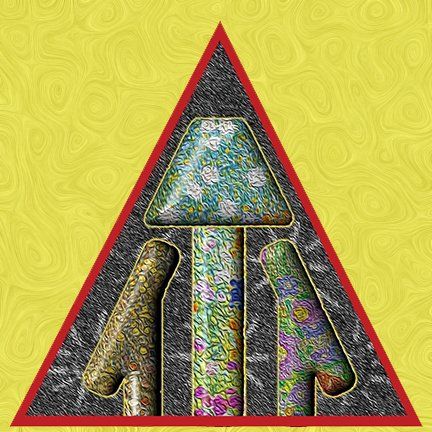
The Archway
Another favourite is the ‘archway’ formation, where a single boulder or series of boulders are hollowed out to create ornate archways with intricate sculpting of the walls and ceiling along with imaginary figures or raised designs crowning the top. Many examples exist of rock formations being improved to appear like stylized clouds, tree trunks or waterfalls. It is unclear if any ruling was made, but archways always employed figurative instead of abstract enhancements.
The Little Mountain
This involves creating a tiny version of a Living Mountain, often swirling and embracing the tip with stylized clouds. A variation consists of creating a base similar to the Tables but then fashioning a broad or narrow single or series of pyramids on top. As with the tables, items of significance may be hung or placed around these mountains. It is also customary to set up Wind Harps around these ornamental forms. These were often the culmination of decorative pathways clusters travelled for delight when out in the evenings.
Figurative Rock Craft
While ‘Archways’ and ‘Little Mountains’ employed detailed figurative sculptures, there is also a strong tradition of completely transforming rude stone into sculpted forms. These works often create simple or elaborate compositions, sometimes suggested by the rough original or designed to serve an event or location. These cover every conceivable subject in an exhaustive series and combinations, including plants, animals, Koru and Yelda. Unsurprisingly, many examples of combinations of abstract and figurative works exist. The abstract generally forms the base or backdrop to the figure or series of figures. While there are many examples of the following items, they are far less common than depictions of gardens, trees, other plants, and all breathing creatures above and below.
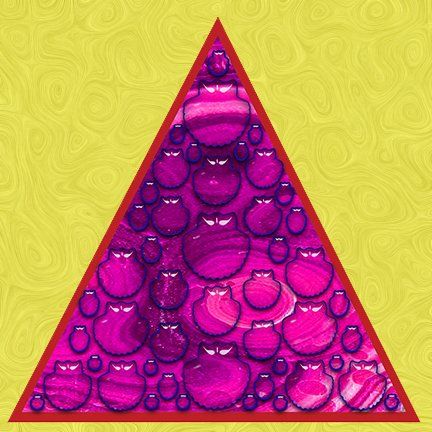
Shell Formations
Many sophisticated and elemental shell formations exist in Mulungu grottos and the Living Mountains. The original raw material often suggested these designs. While most Koru never venture out onto the open ocean, near every cavern within the Sanctuaries, each Living Mountain is filled with seashells embedded in the walls and faithful and fantastical sculpted and painted renderings, both minuscule and monumental. A common motif is composing a wall of shells in polished relief on the most richly veined luxury stones.
Many Living Mountains, with their muted lighting, fluid, sculptural elements, and bioluminescent flora, were crafted to simulate what it might be like to live in the vivid world of the tidal pools and ocean shelves just off the coast.
Knots, Utensils and Instruments
As with the shells, many beautiful works are made to appear as giant knots and other unlikely representations of tools, utensils, and instruments. These can be of interest in displaying outmoded or little-used items from the past—many examples of musical instruments, such as horns and bells, are often of fantastic dimensions. While an ancient mountain tradition, some effort was extended to recreate this ornamentation on the walls of Living Mountains.
Rock Craft and Water
This is seen as a more profound expression of Rock Craft and entirely separate from the abstract accentuation of existing forms. History has judged some of the most extraordinary manifestations of the craft to render stone into vivid depictions of fluid and vaporous forms. These include billowing clouds, arching sand dunes, rushing rivers, flowing water, waterfalls, and ocean swells. These creations are in a particular category and are usually reserved for senior Masters of the Lithic Arts. Over time, there has been an extensive and detailed visual vocabulary of conventions for every water condition. Often, this form was employed in deep caverns and chambers of assembly.
Rock Craft Clouds
Within this tradition, there is a specialized branch for creating cloud forms, often along or covering the ceilings of interiors. Clouds are frequently employed as a dramatic counterpoint to an angular composition, such as a Living Mountain or early mountain grotto. They appear as a blossom with a curling tail wrapped around the tip. There are at least fifty visual categories for clouds, moving from the depiction of faint mists weaving and connecting mountain peaks through billowing and towering forms standing alone or rising over other works with many minor elements, each in their order and location. Given that the Koru seldom see clouds in the daylight, Yelda and Yakku viewing these compositions find them fantastical, as if they are more depicting water currents in the sky.
Rock Craft Fire
The composition of flame formations is also held in very high regard. It has a similar set of conventions ranging from depicting a single flame to an elaborate wall pattern or standing fire, including stringent rules for differing flames under different conditions and even the depiction of sparks. Only a few exceptional examples of this Lithic Art exist, as they are the most difficult to achieve.
Fluid Elements compliment Figurative Compositions
While many examples of works simply converting rough stone into an ornamental depiction of water, clouds, or fire exist, many examples of such elements form a backdrop or dramatic accent to a figurative composition. Early in Koru history, carvings of their Majastas had flaming halos around their heads or entire bodies. There are also many depictions of a Majastas hand within a fire ring. They also appear within a circle of many other designs, the next most common being flower blossoms. The most incredible and elaborate versions of flame depiction are found in these circular or oval borders. Over time, every rock surface in an inhabited area is improved in this manner. This goes in hand with the many other creative works employed in every inhabited area to create the ideal of a civilized and elegant landscape.
Conceptual Leap
Two hundred and eight years before the arrival of the Koru’s first Majastas, Zudaz-Vozev (Zudaz I), specialized Invocates, Operants and Doubles made a conceptual leap within Chandara Grotto of Mount Rongu. One of the most vulnerable legacies to survive The Killing Swath was Healing Jelly. The Koru turned it into a highly organized and immensely sophisticated life form known as the Healing Vat.
Like Sheshenara Nectar and Cohort Jelly, Healing Jelly was another one of innumerable wonders crafted by the Tolku during The Primary Epoch. For most of the First Generation, the original Guardians could bring sufficient quantities of this Jelly into their Sanctuaries to ensure its continuance. In most-ancient times, it was an intensively crafted derivative of Sheshenara Nectar kept in small pots, not only for storage but the ease of transport to heal burns and other injuries.
Due to many complications, a prohibition existed against storing the jelly together in large quantities during the Primary Epoch. Out of necessity, quantities were combined for transport to the Sanctuaries and then separated again. As The Change modified the next generation, it was noted within the Chandara Grotto that when several pots were accidentally combined, they reacted surprisingly. Instead of gradually becoming as inert as they had in the past, the colonies became unusually animated. It appeared the Jelly had also undergone Swath Changes and now rapidly integrated new colonies of different strains to establish novel hybrids rapidly.
Phantasm Spume wakens Jelly
In the year 597 of The Interim, one hundred and forty-four years before the arrival of the Koru’s first Majastas Zudaz-Vozev, an eruption of Phantasm Spume led to a small vial of powered Spume remnants being fed to one of these new colonies. Phantasm Spume was well-known as a Vision Window and also for having many medical and other craft applications, including fortifying other Tatchlan-modified beings. In this case, the colony’s response was far beyond expectation, gaining a sudden presence within the Living System.
The first generations of what would become Koru Vat Masters, along with Invocates and Operants within the Resplendent Work, commenced this mighty enterprise. Eventually, Doubles (see below) would join this august assembly in growing this new being. While unsure what the result would be, all were confident this vital manifestation would lead to a new wonder. The eventual outcome of their work and the colony’s metamorphosis was the first rich and complex Healing Vat. This new being could take an entire body into itself and address internal and external injury far exceeding the original jelly’s abilities.
Spume becomes ‘cap’ of Double during their Conclusive Offering
Generational endeavours would lead to the discovery that Phantasm Spume was a vital stimulant to the waking vat during her Mother Double’s Conclusive Offering. By the release of first Field Yelda onto the Marachla Plain, it had become common practice to enclose a small vial of Spume with other materials accompanying a new Double’s Egg from the Double and Vats Bureau of the Wellbeing Ministry. Specialized ‘Spume Masters’ within each Farmer Enclave would perfect the composition of this material, often a mixture of both raw and improved grades, according to details provided by the Double’s cluster as to their health and disposition. This ampoule would be set aside until the Double died and then was sprinkled on her head as she was lowered into her vat during the Conclusive Offering.
State of Flux and Pomona Nexus
Honoured Historians and Venerable Scholars now look at this notable period as having two primary elements. The first involved clear indications the jelly colonies were more affected by The Killing Swath than most other living beings, ‘Recovered’ or otherwise. Their state of flux magnified the impact of the Phantasm Spume application. This made them far more prone to radical modifications within Tatchlan than they usually would have been, allowing for the accomplishment of very complex sets of processes that generally would have taken millennia in less than a century. The second primary element leading to these breakthroughs was a confluence of genius.
Much of the courageous and unprecedented work described below, including the inspired introduction of
Takshakutan to these emerging vats, took place within one prodigious generation of clusters in the Chandara Grotto of Mount Rongu, notwithstanding Suvuka hordes rampaging outside throughout the Mulungu Mountain Chain hunting for all Koru. Many names of clusters, circles and individuals, in particular Operants and Doubles, have come down to us from this ancient time. Critical moments of these events are immortalized in literature and many theatrical productions and oratorios. They are known as the ‘Pomona Nexus,’ after the Pomona Cluster, which spawned four key Doubles and one Operant active in this project. The Koru’s Wellbeing Ministry’s many departments and offices are routinely named after this cluster and other vital clusters and circles from this period.
Jelly Eggs to Egg Sacs
The original Primary Epoch Healing Jelly comprised millions of highly organized breeding entities. The females laid their eggs on a select few of their attending males’ backs. The eggs gradually drew life out of the host until the hollow body disbursed and the hatchling emerged. Nearly one hundred magnificent Operants within the Living System altered this process, so all egg-bearing males came together to form a tightly packed knot.
This stimulated egg-bearing females to lay their eggs on their consort’s backs before conducting them to latch onto the surface of this knot to form new layers. Initially, this process was limited by the size of the liquid civilization producing the egg. This led to approximately one-third of the mass coalescing into the egg and the remaining two-thirds separating themselves from it. As the males were absorbed, their bodies were pushed to the surface, forming a skin over the many eggs.
At first, the remaining mass often did not survive this process. One of the four Pomona Cluster Doubles, Pomona-Uma, working with these new beings, provided the answer (see below).
Pomona-Uma and the Healing Doubles
Doubles had always been a treasured Spoke of the Cluster Wheel throughout the Primary Epoch. Their healing ability had always been through their blood. After death, their bodies were consumed by the cluster in a ‘Repast of Remembrance.' This fortified the cluster for that and the following generation. It was discovered by chance by Pomona-Uma, a Double working among other Doubles of the Pomona Cluster on the rapidly evolving Healing Jelly. When a new egg separated from its parent jelly, the latter separated and shrunk into itself and grew dark. Pomona-Uma took out her Offering Knife, cut her hand, and let some of her rich blood fall on the parent jelly. The jelly surprised everyone by responding in a different matter that had not been seen in the past. Now, it rebounded and began a fresh cycle of growth. A small amount of spray of her blood covered the egg and absorbed it. She picked up the egg, and the final unforeseen response occurred. Even though the cut had already healed, the egg appeared to settle, and she found herself bonding with the infant civilization in her hands. As Doubles never have offspring but absorb each conception, paternalistic feelings were never ascribed to them.
The first Trial of Separation in history
Pomona-Uma would not set down the egg sac and felt compelled to withdraw to a secluded location. The famed Pomona Cluster included both Invocates and Operants. A specialized Invocate managed to locate the Egg within the Resplendent System and conducted the Pomona Cluster Operants and other Invocates to this unique presentation. The Invocates formed a procession, entering to gain knowledge and leaving to offer their insights to Pomona-Uma humbly. She began to feed her egg with drops of her blood at a measured pace while her cluster mates within Tatchlan watched how the Egg developed. Despite the Invocate’s regular visits, she was often left alone and later referred to the experience as her ‘Trial of Separation.’ Within the Living System, it became apparent on the ninth day, the colony was about to emerge simultaneously. Given they would have emerged into a much larger fluid world, Pomona Cluster and many others came up with an alternative for what appeared to be a far more significant presence. Inspired by the Sheshenara Urn design, they fashioned a thin version of what would eventually be the standard Healing Vat body. They created a framework and lined it with skin.
First Egg enters its Vat
On the eleventh day, the egg burst open and Pomona-Uma took it to its new vat. Her cluster lifted her so she could never let go of her egg as she was let down into the vat. Without prompting, she opened many wounds, washed the inner walls and covered her opened Egg with her blood. As her cuts swiftly closed, they saw the blood absorbed, and the colony emerged and began to spread. Her cluster mates lifted her out, and large Sheshenara Urns were gradually poured into the vat as the colony swiftly moved up the sides. These events took on a fantastic form within the Living System and soon most Operants, and many Invocates were inclined to this singular event. The entire Tatchlan System was said to shift and change as a new life entered it.
Pomona-Uma Legacy
Throughout the long life of Double Pomona-Uma, a great many more Healing Vats were created. She saw the final great innovation with the introduction of the Takshakutan to impart their transmuting abilities to Healing Vats. Each vat generation improved by resolving several difficulties and issues, and the final colony became increasingly vital. Due to extensive work within Tatchlan by the unusually large population of Koru Operants, insights into how the colony functioned and what could be done to increase their viability and power continued.
Before she died, she saw the establishment of the Vat Classes, including
Enriched Vats, Double-Ripened Vats, and of course Mother Vats. She saw Vats laying eggs and the institution of prescribed tools and rituals associated with the Trial of Separation for all young Doubles throughout the Triumvirate. The Dissolution Vats would not appear until the death of a Majastas nearly three hundred years after her death. Her body floated in her Healing Vat, which then took on her name and began her service to Pomona Cluster.
This is a modern Danam Yeldic version of the Double icon. It resembles most aspects of the original Koru icon and is informally known as the Pomona-Uma icon.
Brief Summary
A very brief summary of Koru Majastas history follows. It deals with fundamental changes to Anu that indirectly affect the future Yelda, or directly affect the Danam Yelda's formation and eventual establishment on Statos-Vey. Details of this and subsequent Koru history may be found within the novel series.
Majastas antiquity
It has been noted elsewhere that one attribute of Tolku, Koru and Yeldic Majastas is their extended lifespan. The first Koru Majastas, Zudaz I, lived a relatively short two hundred and eighty-six years. The average lifespan for the remainder of her dynasty was five hundred and seventy-seven years. Subsequent dynasties would often exceed this average.
Zudaz I becomes the first Koru Majastas
Alternatively, Zudaz-Vozev, as this first Koru Majastas was known during Her Reign, emerges at nine and twenty years of age from the Zudaz Cluster within Mount Chraxan in the year 741 of The Interim. This became Year One of what would become the Unbroken Koru Calendar , heralding the commencement of the Secondary Epoch. Sensitives of all classes could sense Her Quickening, and all Maja cried out in unison at Her arrival.
Invocates turned within the Resplendent System to witness the mighty Primary Facespresenting themselves to Her by forming The Arch for Her inspection. Nearly a millennium has passed since they last presented themselves to the final Tolku Majastas.
When this new Majastas entered the Living System, four hundred and ninety-three Operants presented themselves to Her.
Many accomplishments
During Her relatively short life, She founded many guiding institutions for the coming Koru Cluster-of-Clusters Nation. These included becoming the Spoke for the Wheel of Eight Ministries, perfecting the Mecalan colonies to found the vast transportation network of the Koru throughout Anu. She also commenced the first series of Living Mountains, known as the Kupat, and unleashed the final plague that ended the Suvuka dominion of Anu (details below). It is well documented that She also began the most exceptional work of the Koru, the perfection of the Yelda, to form their own Cluster-of-Clusters Nation. Inheriting this noble endeavour from the Central Triumvirate’s ‘Yeldic Colloquium,’ this immense undertaking would continue throughout Her dynasty and the seven succeeding dynasties until early in the eighth dynasty, known as the Mustamu, witnessed this longest of the Koru Majastas Epochal Generational Plans successfully concluded with the realization of the Two Majastas Hands.
Plans to move north
During the Suvuka expulsion (see below), as they abandoned Rho-Jashun and crossed back over to Thermistal, Majastas Zudaz I laid plans for eventually moving the capital north and west. This was a return to the most-ancient capital region of the Tolku. Ruins of the vast Tolku capital of Thithanu lay on the slopes of Mount Barom along the once-teeming waterway of the Uthumpon River. In the year 32 UKC Majastas Zudaz I declares:
“As the babe leaves the cot, so shall the Koru move beyond the sheltering confines of the Central Triumvirate. We shall repossess the Thithanu Capital Region.”
Mount Barom was to serve as a temporary capital. At the same time, plans were laid for the first Living Mountain based on the perfection of new alloys and techniques developed within the Sanctuaries.
Continental Lines
In 35 UKC Majastas Zudaz I, instructs the Circulation Bureau of her Preeminent Works Ministry to begin deep excavations. These were for a planned series of expansive tunnels with tracks running in parallel, with her new Mecalan colonies filling the gap between them. They would be known as the Continental Lines. This arrangement was meant to allow for swift freight transit and the slower movement of living cargo beneath mountains and oceans to distant locations within Rho-Jashun, Thermistal and Statos-Vey, and selected islands.
This year, the Surveyors General commenced their work in preparation for the Mulungu Continental Line within the most-ancient Thithanu Capital Region, and the first series of Living Mountains. It underlies what, in the distant future, would become the Kupataron Living Mountain Cluster of District One. This first continental line would eventually circumnavigate the coastal areas of the continent and then have a series of spokes connecting one side to the other.
In 58 UKC, preparations for a second Continental Line began out of what will be the first Living Mountain. This one is titled the Thermistal Continental Line. It will travel under the Panchala Sea to Thermistal, where it will establish Koru Clusters within the three mountain ranges of this northern continent.
These continental lines and the founding of the first Living Mountain formed a prelude to the coming Koru expansion once the Suvuka issue was addressed. The above icon shows the Mecalan stationed throughout the line. The Continental Line is situated beneath three realms. To the left is the land, and in the centre is the ocean. The right line travels under mountains.
Amazement at doubling of Accordant Tones
With this first Majastas of the Koru Cluster-of-Clusters Nation came an additional refinement unforeseen by all. Early in Her reign, significant alterations occurred within the burgeoning Koru Clusters. Their ‘Cluster Tone,’ including both their internal harmonics and ‘Scent Wall,’ suddenly intensified before diversifying. What had remained the standard ‘Rule of Accordant Tones’ throughout the Primary Epoch, delineating thirty-two well-defined Tones, suddenly doubled into sixty-four. This unheard-of refinement on the Skin of Anu was matched within the Living System. The Majastas and her cohorts of Operants and Invocates observed a profound set of openings and branchings in the Koru manifestation on the surface of the Living Orb. Venerable Scholars would later pronounce this as the final stage of what was already referred to as ‘The Change’ of the last Tolku Mundanes surviving the Killing Swath into the new Koru, rich in all Spokes of the Cluster Wheel.
Recovered Ones
The last Tolku and first generations of Koru are renowned for expending great pains and putting themselves in terrible danger in their efforts to save a large number of Primary Epoch Fashioned Beings and Attainments, later known as ‘Recovered Ones,’ during the first decades and centuries of The Interim. They brought a significant portion to their former potency and utility, while in the case of the Mecalan (see immediately above), they improved and diversified others. They modified most of these survivors to serve them in their new below-ground communities, although several now serve the Danam Yelda. Examples of Recovered Ones are listed below - as they rebuilt their Spokes of the Cluster Wheel; one branch of Touched proved invaluable in this process of saving and refashioning The Recovered Ones, the Cousin Touched.
Some creatures initially recovered were not integrated into the Koru Cluster-of-Clusters Nation. One example is the Doreth. The records are clear that the First and Second Generations expended much effort in finding and securing flocks of these creatures, only to discover with The Change that they were too small for adults to ride. The emergent Koru also had lost the inclination to take to the air. This led to the common phrase, ‘Doreth are for the young and the Yelda,’ also referring to the eventuality of their becoming vital to the Danam Yelda's Cluster-of-Clusters Nation.
Koru Recovered Ones are arranged within three ranks of increasing depth: Converted , Modified and Innovated
Converted Recovered Ones
Larpana Plant
Some Primary Epoch Living Instruments served with only slight refinements. One is the ubiquitous Larpana Plant for timekeeping. The Koru did not change their most-ancient hour designations and commenced their business during the plant’s night cycle. The Larpana Plant is classified as Converted Recovered Ones.
Converted
Kanart Mushroom
The Kanart Mushroom is a raw resident of cavern interiors. In its raw state, without encouragement from the Koru, it grew from the ceiling downward. There is some evidence the Tolku of the Primary Epoch discovered its ability to shield against the growing threat of the Burning Blossom.
During the Secondary Epoch, a refined version of this humble fungus would prove a vital defence for the Koru against the progressively more powerful and dreadful Cycles of later Burning Blossoms. The Kanart are classified as Converted Recovered Ones.
Converted
Takshakutan
The Takshakutan is a modest flower-dwelling creature vital to the Koru’s development of Healing Vats. The Tolku noted its ability to alter poisons into powerful medicines, leading to the crucial development of Lascivious Gains.
During the remarkable period known as the ‘Pomona Nexus’ during The Interim, inspired hands introduced this creature to the new Healing Vats and witnessed as profound a modification as had been seen with Phantasm Spume. It is introduced early and in maturing stages of each Vat’s development.
Converted
Fishery Farm
Early in the Secondary Epoch, an unlikely discovery occurred on the wasteland that had once been the opulent subcontinent of Statos-Vey in the Northwestern Plains Region.
An intact fishery farm from the Primary Epoch persisted within a network of what had been presumed to be raw springs and waterways. Remarkably, these contained surviving specimens of Gelfion, Camalus, Nemain, and Halahala. These were nurtured with care and repaired within Tatchlan to make them once again the staple of most-ancient times.
Modified Recovered Ones
New Mecalan colonies
In 28 UKC, Majastas Zudaz I revived and fully domesticated one of the fundamental Tatchlan Creatures of the Primary Epoch, the Mecalan colonies. Among the ‘Recovered Ones,’ the surviving Mecalan colonies from the Primary Epoch were a ruin of their former glory. Within the Resplendent Work, She crafted a new species for the remainder of the Secondary Epoch.
This is the official icon of the Koru Mecalan. It is the ongoing living legacy of the genius of Majastas Zudaz I. The Mecalan, which had served the Tolku of the Primary Epoch, had significantly suffered from The Killing Swath. While colonies were recovered by the First, Second and Third generations of Guardians, they existed in a much-reduced state and could only be kept alive but not employed. An early endeavour of the first Majastas of the Koru was their location within the Living System and the fortifying and improving their structure and abilities.
These are named Koru Mecalan as they are longer bodied than the originals of the Primary Epoch and are particularly suited to an underground existence within the Koru Continental and Domestic Lines. Without them, neither these vital transit corridors nor the Living Mountain chains would have existed. It may be noted here that, as with most Koru designs, the ‘circle of eight’ Mecalan orient themselves downwards. They are focused, as all Koru society, on dwelling deep within the Flesh of Anu.
Modified
Gomuun
Another native cave dweller requiring slightly more improvement were the Gomuun. These are also infinitesimals travelling in long rows through the cracks and fissures in raw rock. They feed on denizens and, in the process, push air from the outside and inside out. Because of this ability, the Koru turned them into a significant agent for clearing and freshening the air. They bore many long tunnels at precisely the correct dimensions to ensure their modified versions of these beings would efficiently circulate air into and out of their underground chambers. The Gomuun are classified as Modified Recovered Ones.
Modified
Skayo
The Skayo was significantly improved to serve within Koru dominions. They are characterized by hanging down from the ceilings of interiors to modify the humid conditions of large populations living in enclosed spaces. Their gentle clicking forms a backdrop to Koru's life. Skayo is distinctive in not being native to the interiors of the land or mountains but to the steaming equatorial jungles to the south on Statos-Vey.
Their propensity to absorb moisture recommended them. Some were probably brought to the Sanctuaries early in The Interim. Through intensive work by the early Koru Invocates, they were modified to fulfill their offices in a very different, although equally humid, environment. They are also distinguished by their crystalline waste, an essential ingredient in cutting tools. The Skayo are classified as Modified Recovered Ones.
Modified
Vima
The Vima and Cousins, filled the gap left by the most-ancient Tolku’s domesticated Suvuka as working servants and companion animals. While the entire domesticated Suvuka population perished, sufficient numbers of all eight classes of Vima survived the Killing Swath. The Vima alone, among the Koru ’s companion animals, had their version of The Change within the mountains during the Second and Third Koru Generations. In many ways, they grew into the niches the extinct domestic Suvuka left behind. These new Vima were incredibly pliant to Koru's encouragement, and there are now sixteen classes, all said to ‘fit perfectly in the Koru Hand.’
Modern Vima ranges in size from lap companions to draught workers able to carry or pull larger loads than an adult Pathuda. They are sufficiently bonded to the Koru and, to a lesser extent, the Sumudin Yelda. They shy away from all others. For more information on the Vima, classified as Modified Recovered Ones, see here.
Modified
Siliam
The Siliam remained relatively unscathed by The Killing Swath in their raw state. The Tolku did not extensively implement them as living light sources. The primary reason for this was their mobility, making them difficult to use. The Tolku preferred the Queldeday, who became stationary at night when needed. Siliam, native to mountain caverns, were cheerfully modified by the Koru to be employed extensively throughout their vast chambers. A variety of bio-luminescent flora provides much of the general light levels preferred by the Koru. Individual clusters and circles employ Siliam to define specific areas for travel or work. For more information on the Siliam, classified as Modified Recovered Ones, see here.
Innovated
Pelens
Pelens is an example of a new instrument fashioned to alert populations to the loss of distant cluster mates. This was another early innovation dating from The Interim. They are used to monitor the fate of foraging parties travelling great distances from The Sanctuaries to retrieve Primary Epoch Attainments during the Second Suvuka Onslaught. They continue to be employed by certain Koru and Danam Yeldic ministries in modern times. For more information on Pelens, classified as Innovated Recovered Ones, see here.
Innovated
Ixim
Ixim was another such early innovation. This infinitesimal is used to rapidly break down dead matter, particularly bodies, bones, and teeth of both Koru and domestic animal populations. It is employed during a plague, disaster, and other calamities to swiftly purge locations of potentially lethal pathogens breeding in a sudden surplus of corpses. Ixim has also been successfully used to clear areas of destroyed crops. For more information on the Ixim, classified as Innovated Recovered Ones, see here.
Master Duamang’s weapon
The Koru had managed to thrive within the Mulungu Sanctuaries for generations despite vast herds of Suvuka covering Rho-Jashun. Zudaz I, their first Majastas, finally determined the necessary termination of this threat before the Koru could truly possess their legacy. In the year 64 UKC, She declared,
“Our history dictates we must expunge Anu of our former companion, ally and nemesis.”
She charged Honoured Historians on the Skin of Anu and Her corps of Operants and Innovates within the Living System to gather what they could on the formula for the most-ancient Tolku Master Duamang’s weapon. She took full possession of the Twelve Faces notably the Face of Recollection, Humma. She had them conduct Her to many portions of the Inner Orb in search of this living concoction.
As with most potent manifestations of Tatchlan, the solution was found in the realm of the infinitesimal.
Master Duamang’s modified version of the
Brangnam Plague was rediscovered, lying in dormancy. Majastas Zudaz I woke them from slumber for one last battle against the Suvuka. The modified plague was already in a symbiotic relationship with the Suvuka and several of their allies, meaning they were present with all populations, regardless of their location on
Anu.
The quickening of Brangnam took place without them, or their Suvuka hosts, knowing of it. Once again,
Blood Midges
served as the chariot, taking these killers to their prey. Over the next twenty years, the herds were closely monitored, and it became clear the most-ancient venom had the same effect in sterilizing them. Unlike the most-ancient Master Duamang, Majastas Zudaz I ensured universal contagion, including those populations remaining on
Thermistal.
Suvuka final return to Thermistal
The Suvuka detected no change until the expected births of the next generation dwindled before ceasing. This was followed by two decades of increasing movement among the herds. This was speculation to discover any populations unaffected by this barrenness. By 84 UKC, the Suvuka began migrating out of Statos-Vey and Rho-Jashun, crossing over to Thermistal. These crossings occurred in waves, and each following group met an increasingly hostile reception from the Yakku of Western Thermistal. The harried population went to Central Thermistal before breaking off into two groups. The smaller group quietly made their way north into the Teval Valley surrounding their sacred Lake Teval and its large island of Lewetar. The larger group continued to move east towards the Vettencore Passage.
Suvuka traditions East of Vettencore
Surviving records of research conducted by generations of Tolku revealed that along with the island of Lewetar in central Thermistal, the eastern portion of the continent was highly significant to the Suvuka.
Unbeknownst to the Tolku, the Vettencore Passage, cut off the eastern third of the continent, allowing the contained Suvuka to continue many of their most important cultural traditions.
These customs were so strong that even now, many choose to end their days in these settings. They began crossing over what had been their prison walls to now voluntarily occupy their former preserve.
Suvuka surround Lake Teval and the island of Lewetar
This large freshwater lake was the home of what appeared to be the culturally significant island of Lewetar. Tradition tells of these Suvuka forming a ring around the shore before performing their ritual dances and then swimming to gather on the island. This tale persists despite any credible evidence or surviving eyewitness accounts. What is known is that in the distant future, vast numbers of Suvuka talons and bones will be discovered around the shores of ‘The Grand Lake’ and throughout the island.
Enimik Round
In the year 98 UKC Majastas Zudaz-Vozev makes a highly symbolic action. She walks openly through Enimik Round on a clear day at noon. This was the most extensive Suvuka ‘mesmerizing run’ site on the northern Marachla Plain. Her Commandant Ministry completed extensive sweeps and found no living Suvuka left. They gathered all the Suvuka bones they found and were able to bury the tall pillars at the centre of the round within a considerable mound of ‘long-dry’ Suvuka bones. They could also collect a large pile of loose talons beside the bones. After the ceremony, these bones were taken to the ruins of the Mount Midin Amassment. This site devastated by Suvuka five hundred years before the Mantle of Tatchlan embraced Majastas Zudaz I.
Over two thousand Koru were slaughtered at that site. The bones are burned during a solemn ceremony later that year. By this time, the few remaining herds of Suvuka ancients had migrated north to the Huallapandu Headlands. The Commandant Ministry’s Resolution Bureau set up a perimeter to ensure none attempted to return south. Any they found south of this location were driven off Rho-Jashun via the Pax-Zenam Ridge and onto Statos-Vey.
Yakku response to Suvuka retreat
Majastas Zudaz I had been content to allow the Suvuka safe passage and to end their days with dignity, even easing the way for their exit. Many Yakku refused to allow them to pass, insisting on taking vengeance. They marched out of their western forest nations to destroy them. This action proved another lasting point of contention between the Koru and Yakku. The Yakku pursued those Suvuka continuing across the continent. The final battle occurred on Pramath, a large island off the southeastern coast of Thermistal. It is said they eventually pushed the last few Suvuka off the high walls on the eastern coast into the sea. Despite heavy losses, the surviving Yakku appear to have had a falling out after the Suvuka’s extinction. There was contention before they divided into two groups. One established themselves in the relatively small but rich jungles along the coastline while the rest returned westward to their Yakku nations.
Kupat Mountains
Koru Majastas Zudaz I oversaw foundational construction for the first Living Mountain: Kupat Queens One, over top of the two Continental Lines. The inverted lower pyramid was excavated and constructed, followed by the upper pyramid above the Skin of Anu. Kupat Queens One was a tall and narrow pyramid that was primarily a hollow honeycomb inside, which could hold many thousands of clusters.
At the same time She instructs the Ratio Bureau of Her Wellbeing Ministry to orchestrate a sequence of incremental population surges. In subsequent generations, they eventually occupy these vast new marvels. At the lowest level of this, the upper and lower pyramid connects to the terminals for the two Continental Lines. Immediately above is another terminal for a domestic line that will eventually link this to future pyramids in the series midway between the deep Continental Lines and the surface.
The Kupat series would eventually contain twenty-two Living Mountains moving south and east along the inner side of the Mulungu Mountain Chain. While viewed as immense creations at the time, they would be the smallest in dimensions and numbers of all the Living Mountain series.
This icon is meant to symbolize all Koru Living Mountains. A cross-section with the Upper and Lower Pyramids joined at their bases as a single unit appears. The Upper Pyramid is above ground and is surrounded by the night sky with its four moons. The Lower Pyramid is nestled in the deep loam. This Living Mountain has companions on either side, and all three are joined at the terminus of their lower tip by a transit line connecting them. Inside the Living Pyramid is the Koru Hand, holding the Face of Alatanda, the hub of all Tatchlan Faces. This signifies that the Living System fully informs life within the Living Mountain.
Living Mountain Life
Until the devastating second Burning Blossom series of the Secondary Epoch, beginning in the year 137,107 UKC during the reign of Majastas Ohonomach XIX, the Koru found within this novel creation complete fulfillment of their Cluster-of-Clusters Nation. This is the icon for the most Venerable Insect Society of the Ketukku. They build towering monuments out of all proportion to their diminutive size. More importantly, they crafted an ingeniously harmonious society that inspired the most-ancient Uluvatu Masters in their labour to fashion Tatchlan. From the beginning, it was clear the Koru Living Mountains were inspired by the Ketukku mounds’ external and internal construction and organization. Thus, while each Living Mountain series had its icon, this icon is also synonymous with the Koru Living Mountain Superintendence.
Radiant Interiors
The non-living aspects of these Living Mountains’ ‘lower’ and ‘upper’ portions eventually came to resemble living tissue with eruptions of the art large and small. These already colourful, inert surfaces were festooned with many unique living phosphorescent beings providing glowing beauty and vitality. Statuary unique to the Koru came into being, composed of elaborate frames covered in finely cultivated luminescent flora creating radiant landscapes.
One million within Home Mountain
Most Living Mountains could easily accommodate over one million inhabitants. They provided ample space for between one thousand and two thousand clusters to reside in and vast galleries for specialized museums, Ablution Academies and other Mantle Establishments. Given swift communications and a constant stream of travelling theatrical and other events, it was common for some clusters to spend their entire lives within their ‘Home Mountain.' When they chose to venture out, there were many established circuits to conduct circles and entire clusters on pilgrimage to the many wonders found throughout the Koru’s Cluster-of-Clusters Nation. Most of these wonders also resided within their Living Mountains. The Living Mountain series, including the original Kupats, followed by, in part, the Ronthum (3,240 to 9,187 UKC), Xaduth (9,387 to 20,500 UKC) and Thamand series (20,532 to 25,356 UKC). They encircled the Marachla Plain and the coastline with an evolving succession of towering and notable works, each rising as high as the mountains. Most were coated by mosaics and other art best viewed by the moons and starlight. This was the setting for most of Koru history before the descent into the Deep Domains. Only a tiny fraction of the population remained within the Mulungu Mountains or other mountains on Anu.
Mountain roots connected
At the root of each Living Mountain was a set of terminals connecting it to the domestic transit system. This was composed of both freight and passenger lines. Natural Mecalan are far too powerful for passenger lines and are reserved for freight, which could travel considerable distances in remarkable time. The domestic lines carried passengers from one Living Mountain to the next and beyond in a timely and comfortable fashion. In some central locations of the Living Mountains, a far larger terminal was found beneath the domestic one. These Continental Line terminals connect that mountain to the Mulungu, Thermistal and other Continental Lines traversing Rho-Jashun, Statos-Vey, Thermistal and later several island chains.
Koru Mothers, Yakku Fathers
The Yelda issued from the loins of Koru and Yakku. This was the result of the discovery of the Yakku by the Koru during The Interim. From the outset, the Yelda appeared to share characteristics with both parents. When they produced their own young, subsequent generations consistently displayed the same traits. They also exhibited a notable ability to adapt swiftly to the Koru and Yakku realm’s living conditions. The Yakku Yelda dwelt in the trees with the Yakku, attaining the same skills and proficiencies. The Koru Yelda dwelt within the mountains with the Koru. The populations grew steadily inside and out of Koru/Yakku unions, and as they did, divergence grew in how they were perceived. The Yakku happily welcomed them into their Nests and integrated them into their societies. The Koru came to see the Yelda as a vision. This was not only due to their stature and features resembling the most-ancient Tolku but also to possessing the power to, in time, grow their own Majastas.
This is the first icon fashioned by the Yeldic Colloquium, a body convened by the Central Triumvirate to study and oversee the development of these new beings for what was initially known as the Koru Yelda (to distinguish them from the Yakku Yelda). The hand emblems of each of the parents stand behind them. The Yakku hand was obscured by all in front of it. This suggests their diminished role after long contesting the Koru’s vision for their Yelda. In subsequent developments of this series, the first two classes of Yelda continue to have the Koru Hand protecting them. The third class, initially known as the Field Yelda and later the Danam Yelda is a source of its own depth. The single eye denotes clarity as in other icons following the Primary Epoch conventions.
Three classes of Yelda
After the Yeldic Colloquium had conducted an extensive study of the matter, they began to breed these early Yelda for particular traits. At the same time, Invocates and Operants laboured on them within Tatchlan. The eventual result was two new articulated classes, the Sumudin, and Kudurapala. The rates of consolidation and perfection of these classes varied significantly. The Sumudin was declared complete in the Two Hundred and Thirty-Eighth year of The Interim, taking only a few generations to achieve full viability. They further distinguished themselves by successfully growing all Spokes of their Cluster Wheel to become integrated denizens of the Koru’s Living Mountain society. The other two classes would take far longer to reach this hallmark. Thus, the Sumudin had the distinction of being in full service for over five hundred years by the reign of the first Koru Majastas, Zudaz I. The Kudurapala proved more challenging. They were not formalized until the end of The Interim in the year Seven Hundred and Eight. While the early Koru’s huge population of Operants could perform these wonders, realizing the Yelda’s total capacity required the Majastas Hand. From the moment of the Mantle embracing Her Feet, Majastas Zudaz I took over the Yeldic Colloquium programme. Within the Living System, She saw the necessary threads to weave into their collective presence within the Resplendent Work to reach their full culmination. The result was the bringing about the third and crowning class, initially known as Field Yelda. The successful formation of a viable Field Yelda society in the decades leading up to One Hundred UKC was only the first step in the Epochal Generational Plan known as the Two Majastas Hands. This monumental undertaking would eventually see the Yelda capable of growing their own Majastas and thus become equal leaders of Tatchlan-informed governance with the Koru over Anu. This process would take the lifespans of seven more dynasties to complete, culminating in the Mustamu Dynasty, which worked with unrelenting discipline and matchless harmony. The result was the Danam Yelda.
Sumudin
The Sumudin are the ‘First Generation’ of Koru Yelda for their early completion and closeness to their Mother Koru. They are also unique in growing all the Spokes of their Cluster Wheel in just over one century after their separate cultivation. Unlike the second and third generations, these Yelda have come to resemble the Koru in all ways except size. In one respect, they resemble their Yakku Yelda equivalents. They share in all facets of their parent’s life and cultivate all powers and sensitivities of their realm.
In future dealings with the Yelda and the Yakku, the Koru often employed Sumudin to deal directly with the second class of Kudurapala and the third class, the Field Yelda, as their ‘Paramount Contact.’ While a distinct community possessing their traditions, the Sumudin Maja are aligned to the Koru Majastas ‘through the lower faces of their feet.’
The Sumudin
Icon shows the same Yeldic figure as seen in the Koru Yelda image, standing against the same
White Hand of the Koru.
The body glows as pale flesh does in a well-lit interior. On either side are two classic Cluster Virtues,
Kindness and
Patience, rendered in
Primary Epoch fashion to emphasize the continuity between the Primary and
Secondary Epochs. Sumudin Yelda are known for wrapping themselves in ‘Abyss Robes.'
They don this unique purple and grey cloth weave when venturing out under the
Upper Abyss to confer with their
Field Yelda
or, on rare occasions, the Yakku of the
Marachla Plain.
Kudurapala
The Kudurapala is the ‘Second Generation’ of ‘Clarified Yelda.’ They proved far more challenging for the Yeldic Colloquium’s Operants to finalize and were not fully integrated until near the end of The Interim Period. Unlike the Sumudin and later Field Yelda, they were fashioned for a highly specialized form of service. Reared by the sea and taught all sailing craft, they were intended to be the Koru's presence on Anu’s oceans and freshwaters. Eventually, they became the exploration, commercial and military fleet of the Koru.
They crossed all seas and waterways on the three continents, returning with extensive knowledge and goods. During the Secondary Epoch, which preceded the Danam Yelda and then their Nantu and Emaxul Ages, they played a significant role in maintaining and operating the Continental Lines. The first millennia of the Secondary Epoch saw the xenophobic Yakku Collective curtail the Kudurapala's circumnavigations of the interior of Western Thermistal.
Over time, they have formed a unique culture and abundant distinctive crafts. Within three generations of their establishment, they petitioned and received a novel form of
Healing Vat on their ships found nowhere else (this came at the same time as the
Rho-Jashun Yakku request for Healing Vats able to live high in the canopy outlined in the second novel of this series,
Amarel Mountain). The Kudurapala possess a larger frame than the other classes but are smaller than their Mother, Koru.
While practicing
Nu
avoidance protocols on the open ocean, their skin formed powerful contrasting dark patterns unknown to other Yelda.
This class is profoundly linked to the Koru
Majastas and has
Invocates and rare
Operants within the
Living System to further their work and to remain in contact with the
Eight Ministries. Among all Yelda, the Kudurapala are unique for their ongoing relations with the rare
Invocate Clusters, which are often seeded among this maritime population to ensure their timely communications with other fleets and the
Dallamaplan
Ministries within the Koru
Cluster-of-Clusters Nation.
The Kudurapala Icon follows the Sumudin image of being sheltered by the White Hand of the Koru. This clarifies that Yelda's First and Second Class are indelibly linked to their Mother Koru. Stylized ocean waves surround these images, and the Kudurapala wears a version of their Seashell Headdress. On either side are the remaining two classic Cluster Virtues, Comfort and Openness, rendered in Primary Epoch fashion.
Field Yelda
The Yeldic Colloquium also produced a third class of Yelda, eventually named the ‘Field Yelda.’ While they showed great promise, the Colloquium reached the end of their capacity to perfect them. The first Koru Majastas, Zudaz the First, carried this mighty enterprise forward in what would be the first of many Epochal Generational Plans, culminating in the realization of the ‘Two Majastas Hands.’
In 100 UKC, two years after Majastas Zudaz-Vozev walked openly through Enimik Round, signalling the impending extinction of the Suvuka, the first autonomous clusters of Yelda were seeded within the Royran Valley, some three hundred andas east of Mount Arnom, to begin their existence. During the subsequent century, the Majastas devotes significant time to their development within the Living System.
In 200 UKC, a rarely-employed ‘Spice Driver’ was worked by the Majastas to provide a powerful fuel to the first waves of the Field Yelda. This propelled them from this expansive and green valley onto the Marachla Plain. Their destinations were within the proximity of pre-existing forests composed of Yakku Estates. Groups of Sumudin were tasked with maintaining ongoing relations with these Field Yelda. They studied and reported on their growth and development.
The Yuna Cluster, introduced in the second novel of this series, Amarel Mountain, are second-generation Sumudin performing this service for the Sama Cluster.
Royran Valley has always been remembered for nurturing these first generations of Field Yelda. In later ages, it houses members of two different series of Living Mountains within its confines. This region will become a distinguishing feature of District Five, the Ronxad Interlaced Dependency.
The Field Yelda Icon is distinct from the First and Second Yeldic Classes. The White Hand only touches the head, while the Yakku Hand Emblem embraces the feet and legs. This signifies the continued presence of Yakku in the Field Yelda’s lives through the Yakku Estates found across the Marachla Plain. Initially, the Field Yelda were in regular and ongoing contact with the Yakku on their Estates. In this icon, Nu fills their days and bronzes their bodies between the two halves of the old Tolku whole. In the above image, the most-ancient icons for the four seasons are on either side. This reflects the Field Yelda’s long sojourn on the central and northern Marachla Plain, where they cultivated, among many things, vast fields of Salarish that fed the continent. The later Danam Yelda would mostly dwell within the lush jungles of Central Statos-Vey, where seasonal changes differ.
Open Air Civilization
Eight Majastas Dynasties and twenty-thousand years passed, with most of the Field Yelda living a pastoral and agricultural existence in conjunction with their Yakku Estate neighbours. Together, they formed what the Koru called an ‘open-air civilization.’ A regular bulletin on Yeldic progress was circulated throughout the Koru Cluster-of-Clusters Nation. A few lyric and dramatic entries were eventually included in the first half of the Yiz-Vayaj. One famous line comes from this time: “While once we could only call them awakened, we now can call them Alive and Engaged.” Beneath the surface, within the Living System, these Field Yelda were fashioned with steadfast and unwavering patience. In a series of small increments taking hundreds of generations to perfect, they moved towards what Koru Majastas Zudaz I and the Yeldic Colloquium had envisioned.
Field Yelda last to mature
The Field Yelda were the last of the three classes of Yelda to reach maturation. It was not until the fourth Koru Majastas Dynasty, during the reign of Between Majastas Proponum I, that they finally developed all the Spokes of the Cluster Wheel. None of their Maja were sufficiently seasoned to become Invocates and join the Koru within the Living System. They see three more Koru Dynasties and endure the six cycles of the first Burning Blossom of the Secondary Epoch. The first three were during the Proponum Dynasty, followed by three more in the Nopsantur Dynasty. They would endure two crucibles on the island of Tich-Tushmul before their final manifestation would be realized during their Ceremonial Walk to Statos-Vey. This was another sign of the Danam Yelda descending to greater depths than their Field Yelda ancestors, like the Sumudin and Kudurapala; they were finally able to grow Maja strong enough to become Invocates, and, in time, Operants, able to operate within the Living System.
Impact of the First Burning Blossom on Field Yelda
The first cycle of this Burning Blossom occurred in 18,218 UKC, during the reign of Koru Majastas Proponum I. The Kudurapala reduced their movements and enacted strict nocturnal protocols on all their fleets during the active portion of this cycle. The Sumudin followed their Mother Koru in retreating deeper into their Living Mountains. Only the Field Yelda remained with their Yakku on the surface of the Marachla Plain. During the second cycle of 20,592 UKC (Majastas Proponum V) and the third 22,902 UKC (Proponum VIII), the Field Yelda continued on the surface. Within the Living System, signs of strain became apparent. While many modifications were made to fortify them, an intensive study proved they also were adapting and growing new aspects of themselves. By the fifth cycle of 27,761 UKC, Majastas Nopsantur IV determined the population had to be separated for two divergent Yeldic initiatives.
Tich-Tushmul
In the year 29,007 UKC, under the reign of Koru Majastas Nopsantur VI, a small portion of the Field Yelda population was moved to Anu’s largest oceanic island, Tich-Tushmul which lies off the south-western coast of Rho-Jashun. The sixth and final cycle of the first Burning Blossom of the Secondary Epoch (30,089 UKC under Majastas Nopsantur VIII), found the well-established population living in the open. All other Yeldic populations were sheltered.
During the full cycle, there were increased incidents of ‘madness and strange births,’ but they recovered more swiftly than the exposed Field Yelda had from the fifth cycle in 27,261 UKC. This population begins to transform, accelerated due to this additional exposure and intensive work within the Living System. They now distinguish themselves by the widespread growth of their first Invocate-grade Maja.
The first Yeldic Majastas arose on the island in 34,999 UKC, during the reign of Koru Majastas Harapath III.
Significant work occurres within Tatchlan, and close observations are by attending Koru on the island. After establishing themselves as a rightful presence within the Resplendent System, this new mantle dynasty became unstable after the death of their first Majastas, who had reigned for five hundred and eighty-eight years.
In the year 35,587 UKC, a horror took place during the reign of Koru Majastas Harapath IV. The Island Yelda's second Majastas twists into a ‘Rogue Mantle,’ mutilating and destroying all Yelda on Tich-Tushmul. The attending Koru could do no other than evacuate to the island of Tinatin to the east. A task force was mobilized to gather as much information as possible about what occurred before leaving the island, allowing it to recover for over ten thousand years.
In the year 47,011 UKC, during the reign of Majastas Mustamu I, a second Yeldic population is sent to the island of Tich-Tushmul. In the year 48,588
UKC, under the reign of Majastas Mustamu II, two significant events come about. First, the second Tich-Tushmul population is destroyed by their final
Majastas Radashum-Nal. Second, this leads to the final correction within the descendants of the
Field Yelda. They were commencing their
Ceremonial Walk from
Dalinantu in southeastern
Rho-Jashun to
Upata-Shepsus at the heart of
Statos-Vey and are destined to become the
Danam Yelda. These events are detailed in ‘Dalinantu Emergence,’ the third novel of this epic series.
It will be noted that this icon closely resembles the Killing Swath icon. The difference is the burning legs and feet of a Yelda. This is confirmation that what took place on the island was a limited version of the same event, triggered by the last Yeldic Majastas of the island. As such, it is abundantly clear the Killing Swath separating the Primary from the Secondary Epoch was also enacted by the last Majastas of the Tolku. The shining presence of the Danam Yeldic Blue Star signifies this was the crucible from which this final perfect manifestation emerged.
Longest Generational Plan
Commencing with the first Koru Majastas, Zudaz I, and continuing through seven dynasties and forty-seven millennia until Majastas Mustamu I and II, work continued within and without the Living System on this perfection of the Yelda. This colossal series of millennial endeavours by sixty-six Majastas was composed of many successive Generational Plans tightly wound into each other. The vast scope of this cumulative labour is likened to the most-ancient Uluvatu Masters' fashioning of Tatchlan itself.
First Seven Dynasties
There were seven Majastas dynasties before the Mustamu Dynasty. They were the Zudaz (Year One to 6077 UKC ), Lotmah (6077 to 12,238 UKC), Thosonu (12,238 to 17,908 UKC), and Proponum (17,908 to 24,958 UKC). This dynasty suffered through the first three cycles of the first Burning Blossom of the Secondary Epoch. The following Nopsantur Dynasty (24,958 to 32,877 UKC) weathered the final three cycles. These were followed by the Harapath (32,877 to 41,398 UKC) and the Propentun Dynasties (41,398 to 47,001 UKC). These seven dynasties contained a total of sixty-six Majastas. Mustamu was the eighth dynasty, which saw the emergence of the Danam Yelda.
Mustamu and succeeding seven dynasties
The first two members of the Mustamu Dynasty (47,001 to 57,369 UKC) are distinguished for what Honoured Historians now view as an accelerated Generational Plan to launch what would become the Danam Yeldic Cluster-of-Clusters Nation begun by Majastas Zudaz I. After Mustamu, seven more Koru Dynasties would play a direct role in this series of Epochal Generational Plans. Their collective aim was the realization of the ‘Two Majastas Hands,’ where their Majastas walked side-by-side with the Danam Yeldic Majastas within the Living System. They were the Pothanda (57,369 to 62,517 UKC), the Mopharam (62,517 to 70,553 UKC), the Thropunoph (70,553 to 79,603 UKC), the Nuromolon (79,603 to 90,316 UKC), the Phoyalo (90,316 to 104,969 UKC), the Amathom (104,969 to 125,899 UKC), and the Ohonomach (125,899 to 142,002 UKC). These seven dynasties contained a total of one hundred and three Majastas. Details of the sad fate of the Ohonomach Dynasty, with its distinctive icon, may be found below.
Dynastic Icons
Pictured here are the Dynastic Icons for the first fifteen Koru Majastas Dynasties from their commencement until the Koru moved to their Deep Domains. After that, they cease to play a role in the Danam Yelda’s Cluster-of-Cluster Nation. There was a tradition for most of the Primary Epoch to have Tolku Dynasties symbolized by some infinitesimal form of life, making up most of the Living Skin of Anu. The Koru Majastas initially chose to instead make their emblems out of icons of new forms of Living Instruments and other Tatchlan-modified beings extant during the first Majastas of the new dynasty. Each of these beings is unique to the Koru and is found only within their mountains. Most hang down from ceilings and are edible or medicinal. The one exception in this early series is the Proponum Dynasty Emblem (fourth to the right in the first row). Majastas Between Proponum I chose a diminutive creation of HerHis early Mantle that proved a foundation for much work within the Living System to follow. The final emblem is of the Ohonomach Dynasty; the reason for its divergent design is outlined below.
Ohonomach Dynasty and the Deep Domains
As with the Proponum and Nopsantur Dynasties, the Ohonomach Dynasty suffered from the next series of Cycles of a new Burning Blossom, the first the Danam Yeldic Cluster-of-Clusters Nation on Statos-Vey experienced under the Thamuzana and Hertamasa Dynasties. This series was many times more powerful than the previous cycles and devastatingly affected the Koru Cluster-of-Cluster’s Nation. The first three cycles of this manifestation proved that all surface defences within the Living Mountains, and even within the original Mulungu Mountain Chain, were insufficient and widespread illness and death resulted. Many Living Mountains emptied, and relief and rebuilding efforts were disrupted. A Generational Plan was begun after the Second Cycle, starting from 139,319 UKC, to create a vast new territory beneath the Marachla Plain, collectively known as the ‘Deep Domains.’
Naturally formed caverns were expanded in the two thousand, two hundred years between the Second and the Third Cycles. They were connected to others, and additional immense complexes were created, all linked to the original transit system. By the time of the Third Cycle, commencing in the year 141,528 UKC, most Koru had moved into these Deep Domains, with the remainder buried deep within the lower levels of the Mulungus.
The Living Mountains were emptied gradually during the life of the cycle, with all Koru coming to live within the new Deep Domains. After the Third Cycle ended, the determination was made to make these Domains their permanent home. Separating ceremonies were conducted at each Living Mountain before they were handed over to the Field Yelda and Yakku of the Marachla Plain. Select Living Mountains were ceded to the Danam Yeldic Cluster-of-Cluster Nation for present and future use. These Deep Domains also served to shelter large populations during future events in an initiative called ‘The Shift.’
